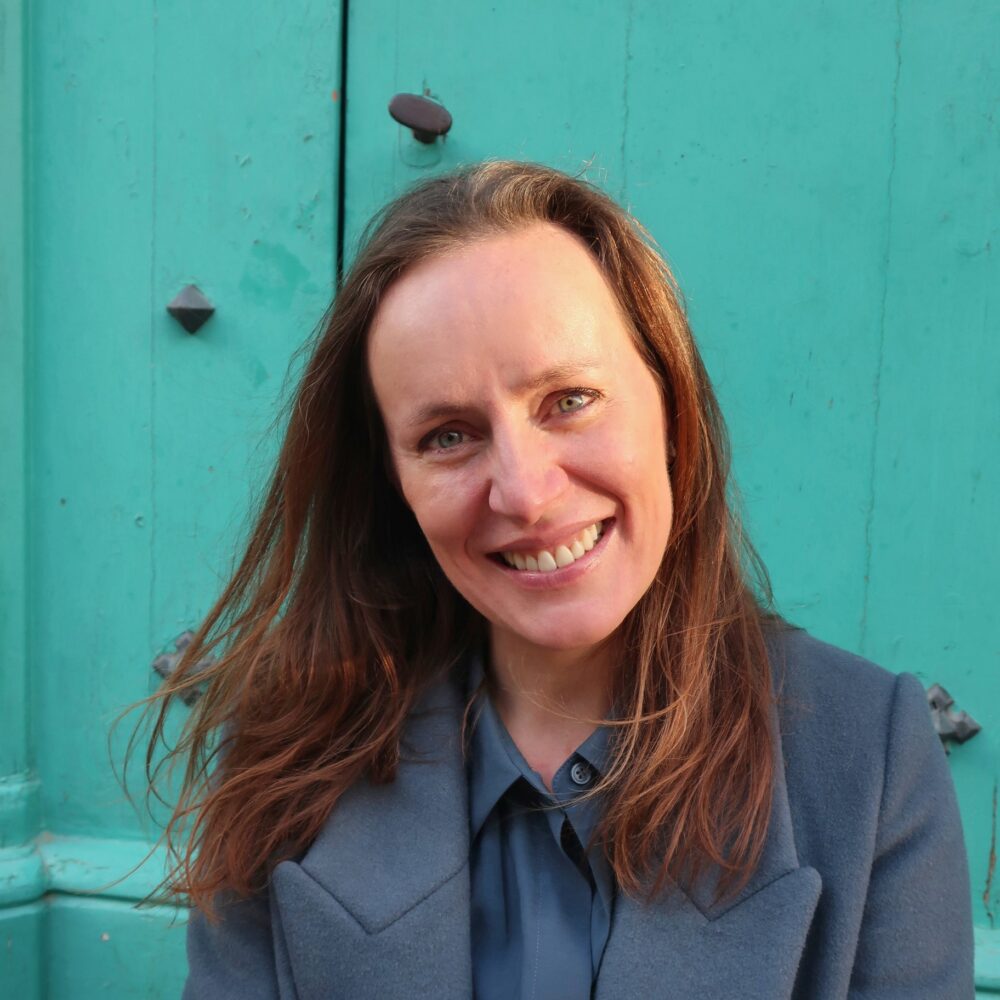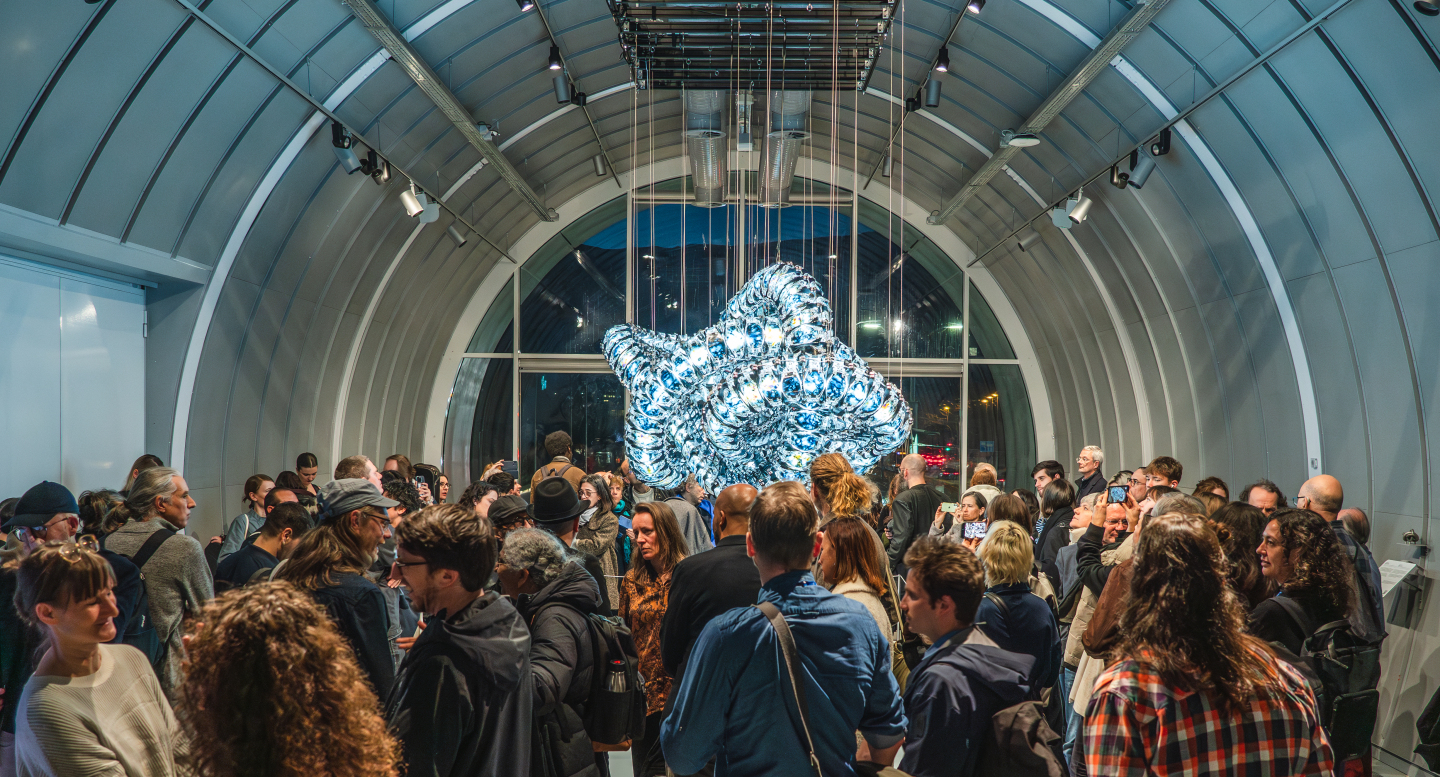Arts at CERN, the arts programme of CERN in Geneva, has invited artists since 2012 to explore fundamental scientific questions alongside physicists.
S+T+ARTS (Science + Technology + Arts) is a European Commission initiative that fosters collaboration between technology and artistic practice to drive innovation and address social, ecological, and economic challenges. It includes a prestigious award with €40,000 in prize money, recognizing innovative projects at the intersection of science, technology, and the arts that significantly impact economic and social innovation. This year’s Grand Prize – Innovative Collaboration goes to Arts at CERN.
Arts at CERN is the arts programme of CERN, the European Laboratory for Nuclear Research in Geneva. Since 2012, it has invited artists from diverse creative disciplines to explore fundamental scientific questions alongside physicists. The goal is to foster exchanges between artists and scientists, connecting the international cultural community with cutting-edge research. The programme offers research-led artist residencies, new art commissions, exhibitions, and events in collaboration with other institutions and at CERN’s Science Gateway. It focuses on artists interested in the intersection of art, science, and technology, encouraging them to engage deeply with CERN’s scientific community. In our interview we find out more about the main objectives, the selection process for artist residencies and future plans for Arts at CERN.
Can you provide an overview of Arts at CERN and its main objectives?
Monica Bello: Arts at CERN fosters dialogue between art and science by inviting artists to explore how physics addresses the fundamental questions about our universe. Our mission is to facilitate meaningful exchanges between artists and physicists, connecting the international creative community through science and research.
Our programmes are designed and curated to embody our mission, understanding the different stages of dialogue and engagement. These include residencies that focus on artistic inquiries at the Laboratory in dialogue with the CERN community. Consequently, we support the development of new artworks for artists who have been in residence. Our programme of exhibitions and events is organised at CERN, with exhibitions at the Science Gateway and the annual Art and Science Summit, as well as elsewhere, in collaboration with cultural and scientific institutions in Switzerland and other countries that are interested in bridging art, science, and society.
What is the significance of bringing together artists and scientists? What unique perspectives do artists bring to scientific research?
Monica Bello: Bringing together artists and scientists lies at the heart of what we do at Arts at CERN. These collaborations hold profound significance as they underscore art and science as collective knowledge-making practices, shaped by our singular context at the Laboratory and in connection with a broad scope of artistic practices. It helps us to understand science as an integral part of contemporary culture, while enabling dialogue and collaboration across disciplines.
Throughout their time at CERN, artists share invaluable insights into scientific inquiry through their proposals. They often provide reflections on the implications of science and technology, considering the cultural and historical contexts of science, the discourses around scientific inquiries or technical developments. We believe it’s essential to enable these encounters, as artists can engage with the social fabric of scientific practice right at the places where basic science is developed and advanced.
One example is Julius von Bisrmack’s commission for the CERN Science Gateway. His kinetic sculpture, titled Round About Four Dimensions, takes the form of a self-wrapping tesseract, a 3D representation of a 4D cube, which is frequently utilised in mathematical theories to illustrate concepts extending beyond three spatial dimensions. Reflecting on his work, Julius von Bismarck commented, ‘We naturally perceive three spatial dimensions, yet imagining more poses a challenge to our imagination. Just as three-dimensional objects cast two-dimensional shadows, four-dimensional entities manifest as three-dimensional forms. When a four-dimensional body rotates, its three-dimensional shadow appears to invert. In this sculpture, that abstract notion is transformed into visible reality.’
CERN scientists have also echoed the value of their exchanges with artists through our programmes. For instance, theoretical physicist Alessandra Gnecchi, who has worked on multiple projects with artist Suzanne Treister, emphasised that ‘an artist can shock us with perspectives that challenge our logical views, but they offer our mind a chance to escape from the rules of physics and find creative ways to approach our research’.
Similarly, Tamara Vázquez Schröder, an experimental physicist at the ATLAS experiment and a regular participant in our initiatives, noted that ‘the ability to step back and appreciate one’s research helps you to find new paths to interpret results. This is precisely what working with artists does; to recall the scale of research we are doing and reflect upon what we are ultimately trying to explain.’
These reflections capture the significance of our work. By facilitating spaces for artistic dialogue within the Laboratory’s context, we intend to nurture an open culture capable of capturing the ever-changing phenomena of our world.
Can you describe the selection process for artist residencies at CERN? What qualities or interests do you look for in artists?
Monica Bello: The art residency programs are the cornerstone of our initiatives. Artists are selected through an open call process and a thorough evaluation. Each year, we receive over 900 applications from over 90 countries. Selected artists participate in a fully funded residency lasting from two weeks to two months.
The residencies are aimed at artists with a distinct interest in the intersection of art, science, and technology, who are eager to engage with the diverse scientific community and immerse themselves in an environment of fundamental science research.
Collide invites artists worldwide to apply. This residency is organised in collaboration with a European city that changes every three years, inviting one artist to spend one month at CERN, followed by a second month hosted in the partner city. Since its launch in 2012 in partnership with Ars Electronica, Collide has included collaborations with Liverpool, UK; Barcelona, Spain; and currently, Copenhagen, Denmark.
In 2021, Connect was launched in collaboration with the Swiss Arts Council Pro Helvetia. Selected artists participate in dual residencies, splitting their time between CERN and scientific institutions with complementary research areas. These have included partnerships with SARAO and SAAO in South Africa, the International Centre for Theoretical Sciences in Bengaluru, India, and ESO and the ALMA Observatory in Chile.
Our programmes have evolved through over a decade of experience, maintaining a structured framework that reflects CERN’s unique context and fosters long-term impacts in art and science worldwide.
What role does the newly inaugurated CERN Science Gateway play in enhancing the connection between art, science, and the public?
Monica Bello: The Science Gateway marked a transformative moment in CERN’s engagement with society, establishing it as a pivotal centre for science, education and culture.
The inaugural art exhibition Exploring the Unknown vividly encapsulates the synergy between art and science, featuring new commissions by Julius von Bismarck, Yunchul Kim, Chloé Delarue, and Ryoji Ikeda.
Visitors are invited to know the diverse ways in which former artists in residence interpret abstract scientific concepts such as space and time, the quantum vacuum, and dark matter to create cultural artifacts that ignite imagination and provoke contemplation about the mysteries of our universe.
The exhibition allows us to support new art commissions. We are now starting to work on the next iteration, which will open in 2026. Artist and filmmaker Rosa Barba will be featured and is already working with our curators to develop a new piece. Other artists will be announced later next year.
What efforts are made to ensure that the artistic dialogues fostered at CERN are inclusive and accessible to a broader international cultural community?
Monica Bello: Central to Arts at CERN’s strategy is public engagement. This year, we launched the first Art and Science Summit, which brought together to the CERN Science Gateway over 400 attendees for discussions led by 20 artists, scientists, and curators. This event, which will become an annual event, seeks to foster key conversations about the intersection of art and science and is accessible globally through live streaming.
Our collaborations with international cultural institutions further expand the reach and impact of our initiatives worldwide. Our recent exhibitions in collaboration with Science Gallery Melbourne, Museum Tinguely Basel, Galician Institute of High Energy Physics, and upcoming ones with Copenhagen Contemporary and Tabakalera Donostia are designed to be inclusive and accessible to geographically diverse audiences.
Additionally, we regularly update our community on residency activities, exhibitions, and events online to foster transparency and participation. As a small team, we are committed to continually improving our efforts to ensure that our activities are accessible and enriching for a broad, geographically diverse international audience.
What are some of the future or upcoming initiatives for Arts at CERN?
Monica Bello: We can already share that the Art and Science Summit will take place on the 5th of February 2025 at the CERN Science Gateway.
Find out more about S+T+ARTS here.

Monica Bello
Mónica Bello is a Spanish art historian and curator. Since 2015, she has held the position of Head of Arts at CERN at the at the European Organization for Nuclear Research in Geneva. In this pivotal role, she provides strategic leadership and oversight for the laboratory’s art initiatives, directing the conception and implementation of the artistic programs, including artistic residencies, art commissions and exhibitions. Recent curatorial projects are the opening exhibition Exploring the Unknown at CERN Science Gateway; the Icelandic Pavilion at the 59th Venice Biennale represented by artist Sigurður Guðjónsson; Dark Matters at Science Gallery Melbourne; Quantum/Broken Symmetries, a touring exhibition in six different art centres in Europe and Asia; and the Audemars Piguet Art Commission for Art Basel. Before coming to Geneva, Bello served as Artistic Director of VIDA, the Art and Artificial Life Award at Fundación Telefónica, Madrid.
